Snowball’s Second Chance: We Save a Barn Find Race Car from Rusting into the Virginia Soil
This article first appeared in Hagerty Drivers Club magazine. Click here to subscribe and join the club.
The first thing you should know about Snowball Bishop is that he was a racer. It’s also the second and third thing you should know about him. Don’t ask how Snowball got his nickname; nobody knows. The eldest of 10 children, he grew up in the hardscrabble hills of southwest Virginia’s Blue Ridge Mountains, where Snowball’s daddy and his daddy before him gouged a living out of the lead and zinc mines of Wythe County.
Although they worked the mines for a living, the Bishops lived for racing. Snowball’s youngest brother, Biggen (nicknamed because of his stature; Snowball gave everybody nicknames) remembers their daddy taking the motor from an old washing machine, fitting it to a shaft with a drill bit, and using it to bore out the intake of an old flathead Ford.
Snowball inherited his daddy’s talents. One year, he took the rusted-out shell of a ’37 Ford coupe from the open field of his farm there on Major Grahams Road, stuffed a big Mopar engine in it, then headed out to the local dirt track and won—often. But after a few racing seasons, and for reasons nobody can quite remember today, Snowball hung up his helmet and parked the old coupe.

It sat for more than 30 years, until Tom Cotter, host of Hagerty’s Barn Find Hunter, entered the picture. Cotter first met Snowball in 2008, when he was searching for 427 Fords and happened upon Snowball’s field full of Galaxies. Five years later, while working on his book, Barn Find Road Trip, Cotter found his way back to Snowball’s farm again and met the old race car. In a drawl as thick as the fog that hangs in the Blue Ridge’s hollers, Snowball told the tale to Cotter:
“I was running a flathead in this coupe until the small-block Chevys got to be something I couldn’t beat. I decided I was gonna start running a Mopar engine. Richard Petty had started to run Hemis, and I found out he had a bunch of stuff left over at his place, 426 wedges and stuff. I thought maybe I had better learn more about that.
“When I pulled up in the driveway, Lee Petty [Richard’s father] was sitting on the front porch. Lee said to me, ‘Boy, can I help you?’ I said, ‘I’m looking for some parts. I’m thinkin’ about runnin’ Plymouth. I been runnin’ Fords and I can’t run with the Chevrolets.’ Lee yells back into the shop, ‘Hey Richard, how much do we want for that stuff?’ Richard comes out, wipes his hands on a towel, and says, ‘Would you give me 12 hunnerd for it?’ I said, ‘That sounds reasonable enough, but I ain’t got 12 hunnerd with me.’ Richard said, ‘How much you got?’ I said, ‘I got a thousand dollars, all my money right here.’ Lee said, ‘Richard, would you take a thousand for that stuff?’ Richard said, ‘Yeah.’ But I said, ‘Now wait a minute here. I got to have some gas money to get home. I’m a hunnerd and 50 miles away. And I’m gonna need a meal.’ Lee said, ‘Gimme nine hunnerd dollars. Load it up.’ And that started the ball rollin’. We won the championship in 1972. I run ’em and run ’em till we run outta 426 stuff and then I run 440s.”
Snowball always wanted to return his coupe to its racing glory. That dream started to become reality when Jordan Lewis, a cameraman for Hagerty Media, came up with the idea to bring the car back to Hagerty’s headquarters in Traverse City and have Davin Reckow restore it as part of our Redline Rebuild series. Snowball—after some convincing—agreed to the project. Reckow hooked up the trailer to Hagerty’s Ford F-350 and headed south to collect Snowball’s coupe. “I raced dirt track for almost 20 years, so that made the project appealing to me,” Reckow recounted to us later. “And being an old car made it even cooler.”
Once the car was in his shop, Reckow took stock of it. “It’s a ’37 split-window coupe with the rear-window divider and window center posts removed,” he said. “They used the frame from a ’55 Chevy and a front solid axle from a Ford. Leaf suspension all around.
They had a beautiful roll cage in it. I didn’t change a thing on that. You could tell they were very close to NASCAR country.”
The 440 engine, likewise, was a mix of vintages. “We could tell by the date code on the block that it had been cast on the night shift of January 3, 1972,” recalled Reckow. “One of the heads was from ’68 and the other was from ’78. I found a pair of ’68s, cleaned them up, and installed them.” Once the engine was back together, it was time for the dyno. Reckow was surprised by the numbers the stock motor made—403 horsepower and 489 lb-ft of torque—but knew he could do better. After tweaks and upgrades—long-tube headers, an MSD distributor, a new intake, and a Holley 750 carburetor—the engine cranked out 489 horsepower and 532 lb-ft.
With the engine installed and the car completed, it was time for the coupe to head home. But time had passed, and the checkered flag had dropped for the last time for Snowball when he died on October 14, 2021. He was there in spirit on the farm, though, and with the family and friends who had gathered for the coupe’s homecoming. “When Davin fired it up, it was just like back when Snowball would get the car ready for racing back in the day,” son Jimmy said, his voice breaking up from the memories. “He would rev that thing up and you could hear it for miles.”
***
Having reunited with the family, it was time to reunite with the dirt—specifically, the dirt of the track at Wythe Raceway, where Snowball and the coupe had opened the racing season in 1970. “A static display of a race car is fine,” Reckow noted. “But to really enjoy it, it needs to run on a track.” And run it did, with Jimmy Bishop taking the first turn at the wheel. “Back then, I never did drive the car, I just warmed it up for Daddy,” he told us. “It was exciting. The adrenaline was up there—whew! You wanna go faster, but hey, I wanna take it home!” Jimmy’s younger brother, Ricky Joe, was next. “It wasn’t that bad for noise,” he said as he took off his helmet. “But it was right there where you know it was at.” Then Jimmy turned to his niece, Amanda—Ricky Joe’s daughter and Snowball’s youngest granddaughter. “Hey, you aren’t gonna be satisfied unless you go around here, girl.” Amanda hesitated at first. “It wasn’t even in my mind to drive it,” she recalled to us. “I was just happy to be there, to be honest.” After a few laps, she was glad she got a chance. “I don’t know if I’ve ever heard a 440 before, being around Fords all my life. I try not to cuss, but it was badass!”
That night at the track, Snowball’s coupe ran a few parade laps with Reckow behind the wheel and an American flag flying off the rear bumper in a holder he had modified for the purpose. Later that evening, the ’37 coupe ran as the pace car for the Modified feature race. “Having private time at the track was great,” said Reckow. “But putting it in front of the public and running some laps was really special, because there were people there that night who remembered the car racing back in the day.”
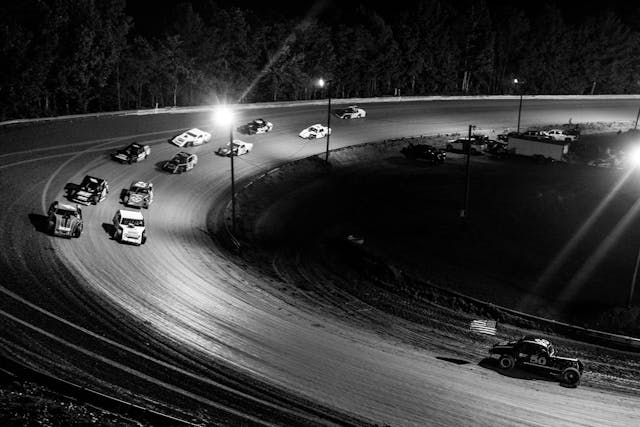
The fans will certainly remember when Snowball’s coupe came home, as will Jimmy, Ricky Joe, and especially Amanda. “After I finished my laps, I asked Davin, ‘Can I do a donut?’ And he was like, ‘Heck, yeah!’ So he showed me what to do, and I did a donut. That was the highlight of my life!”
Somewhere—probably where the cars are fast and the tracks are hot and the dirt-track racing never ends—Snowball Bishop is laying a smokin’ patch of rubber in celebration.
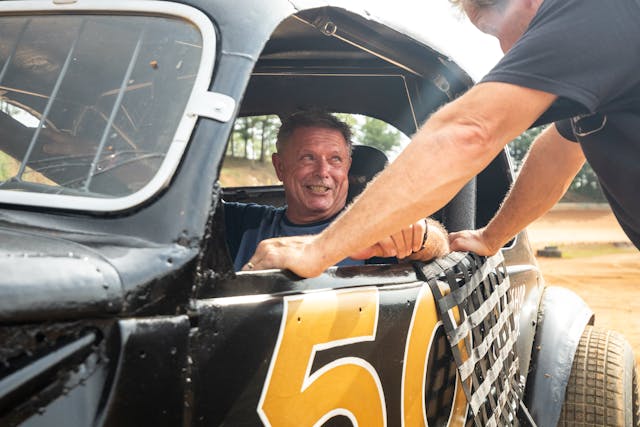

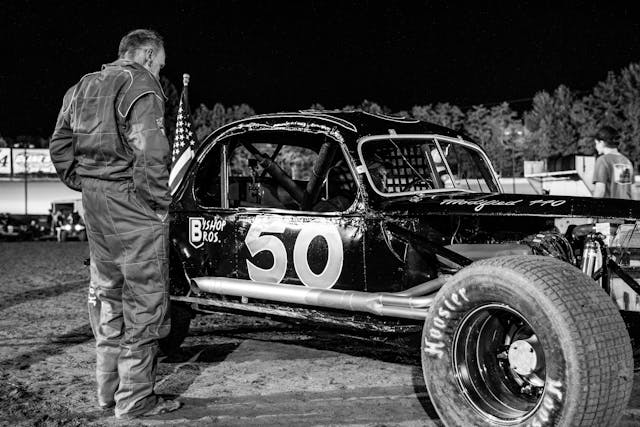
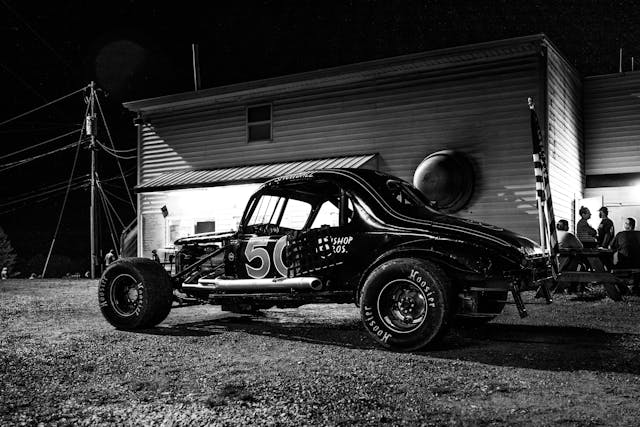
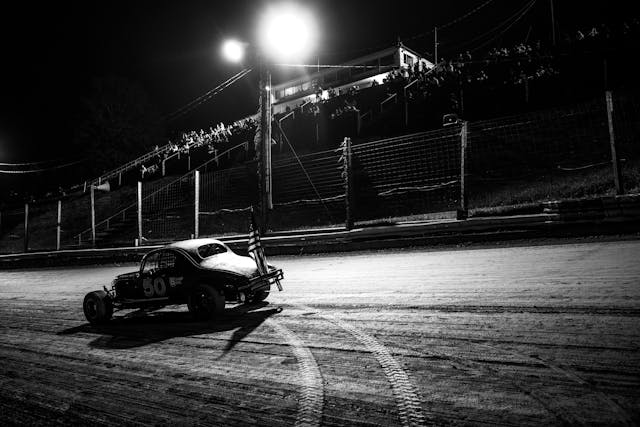
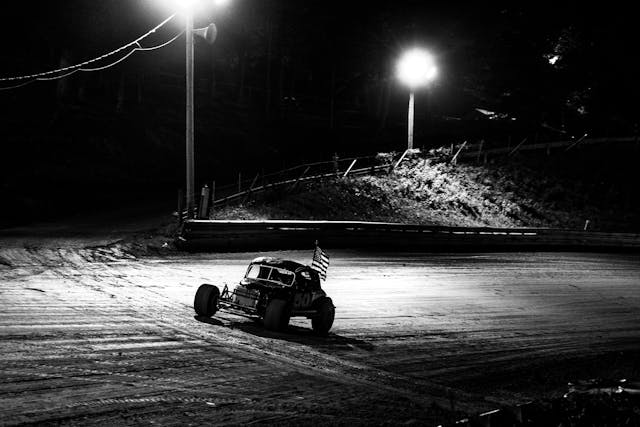
***
Check out the Hagerty Media homepage so you don’t miss a single story, or better yet, bookmark it. To get our best stories delivered right to your inbox, subscribe to our newsletters.
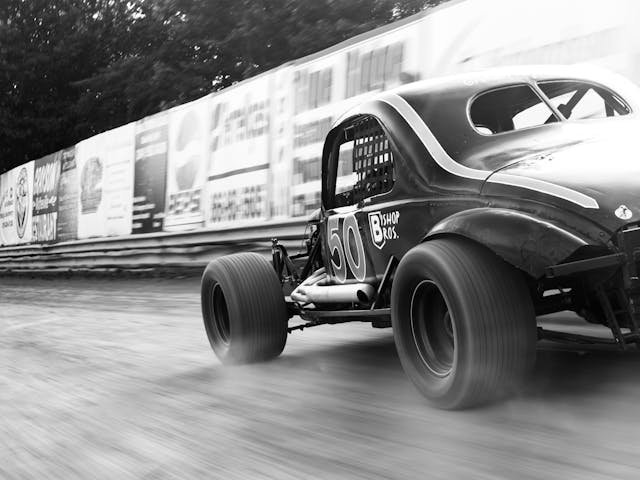


So, just how many times will you keep reprinting this?
“This article first appeared in Hagerty Drivers Club magazine.”
I find the name Snowball amusing. The nicknames we get or give can be amusing. The car is very cool.
Is Snowball from the book Animal Farm? Love the coupe!